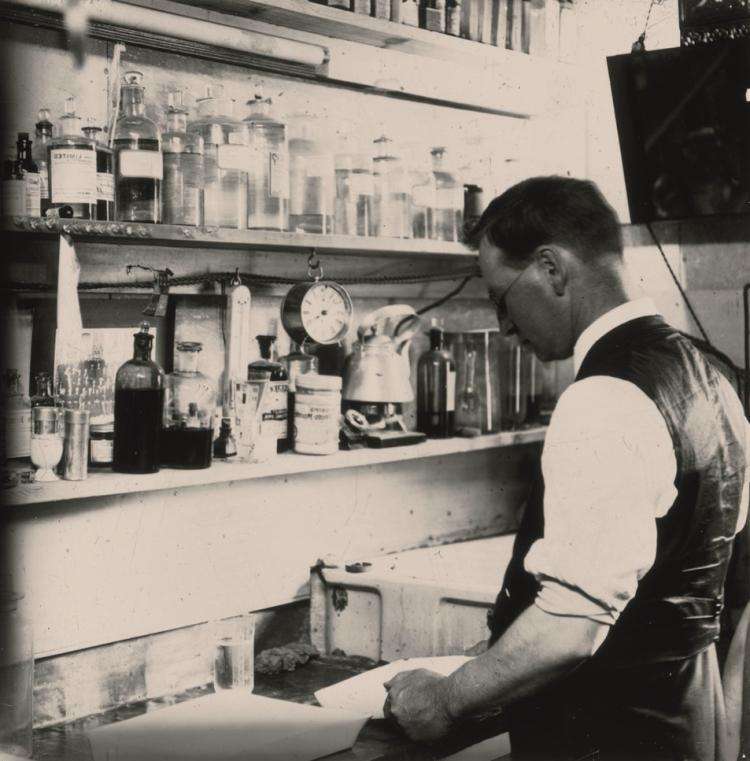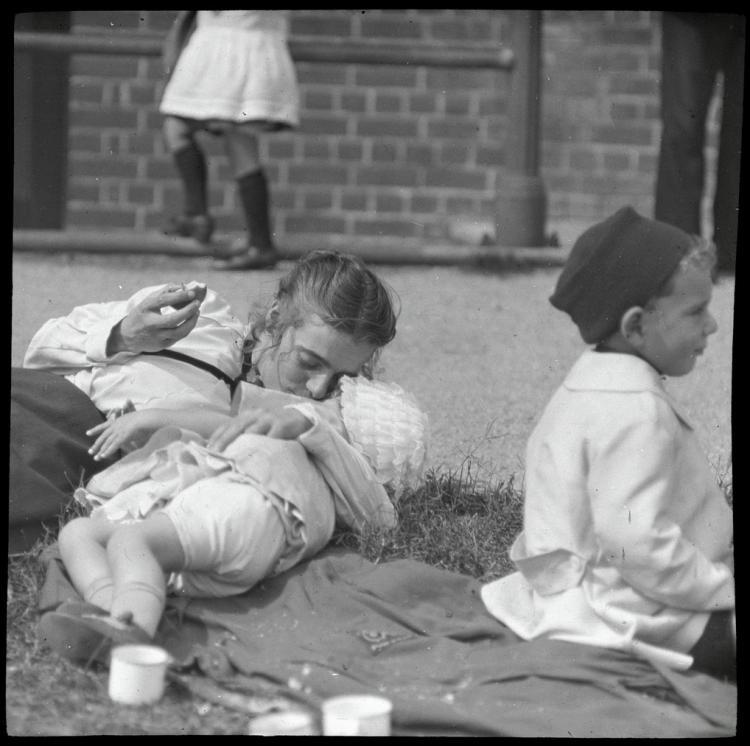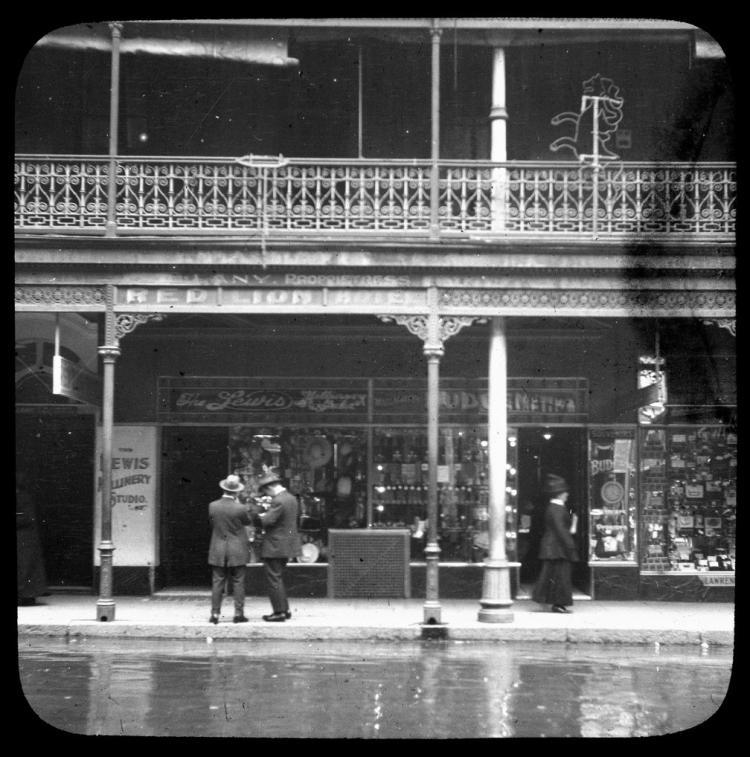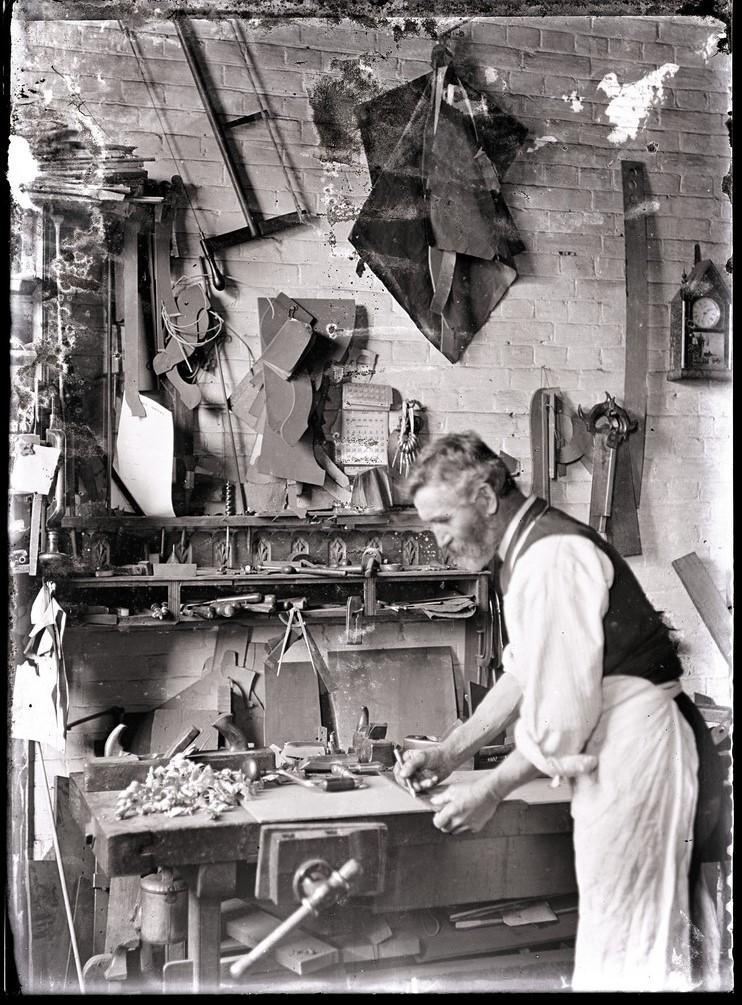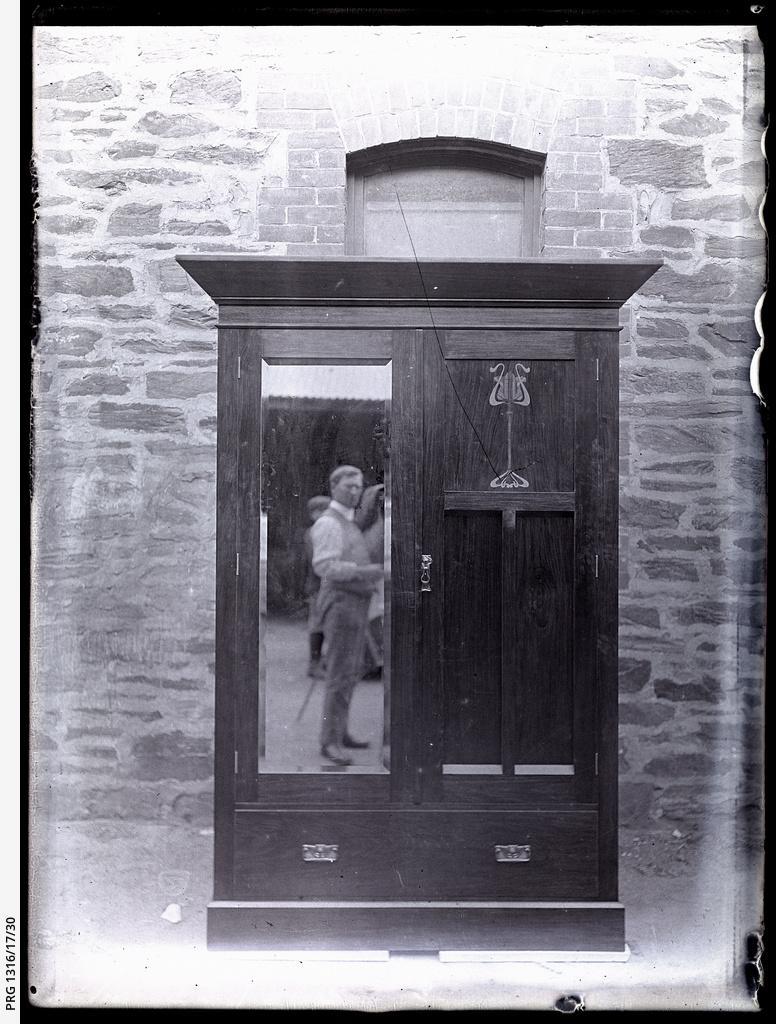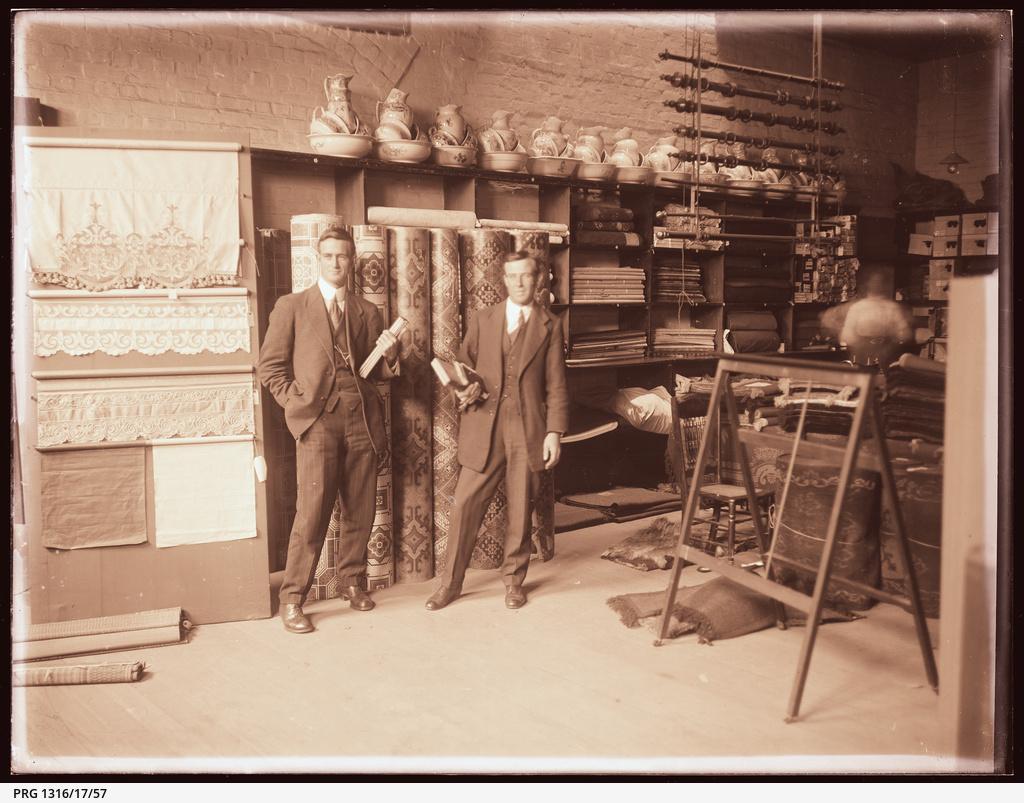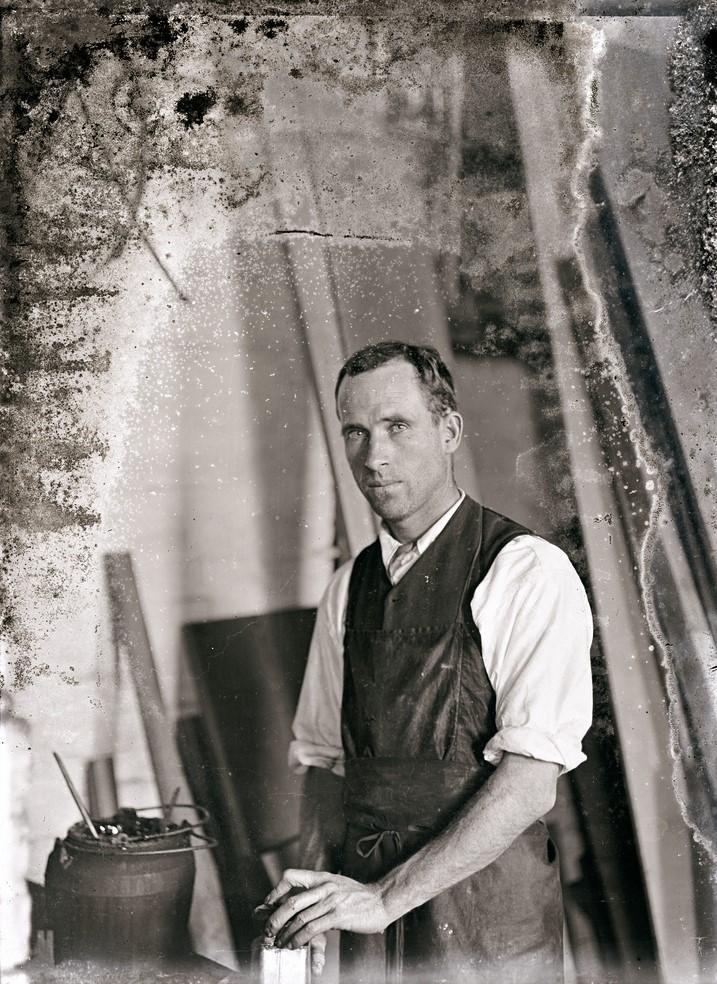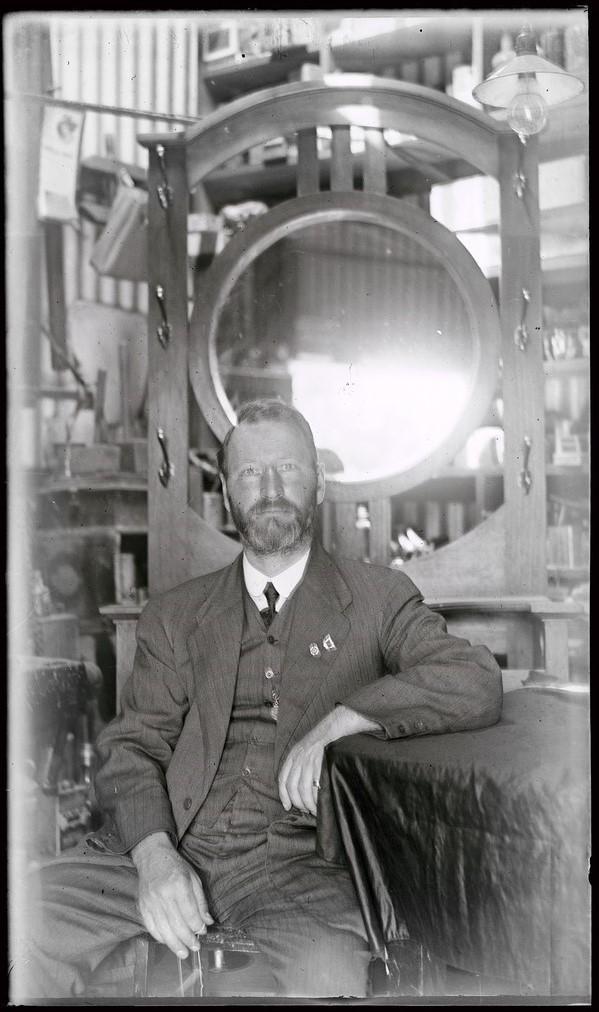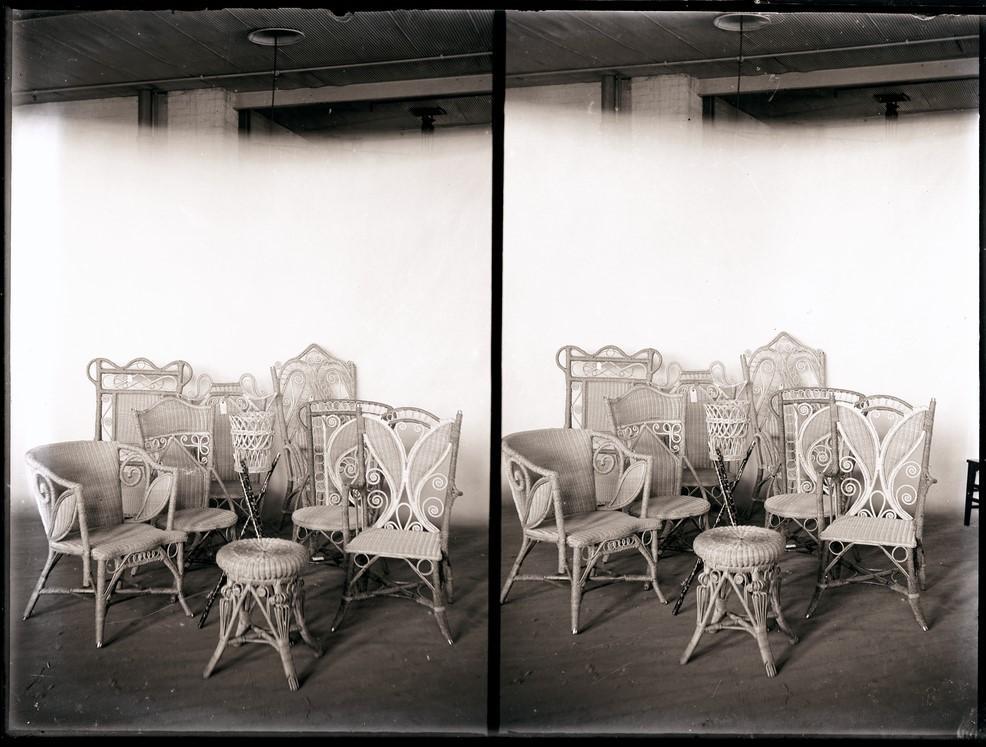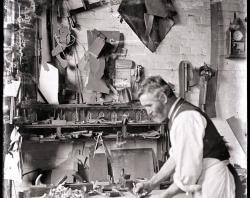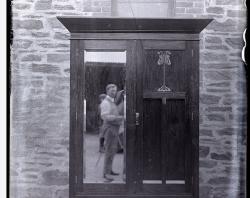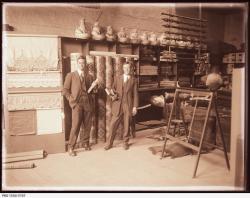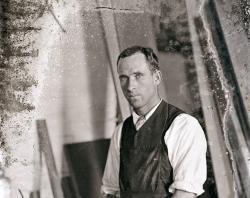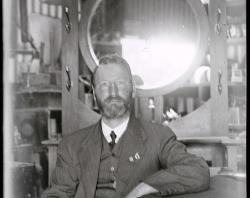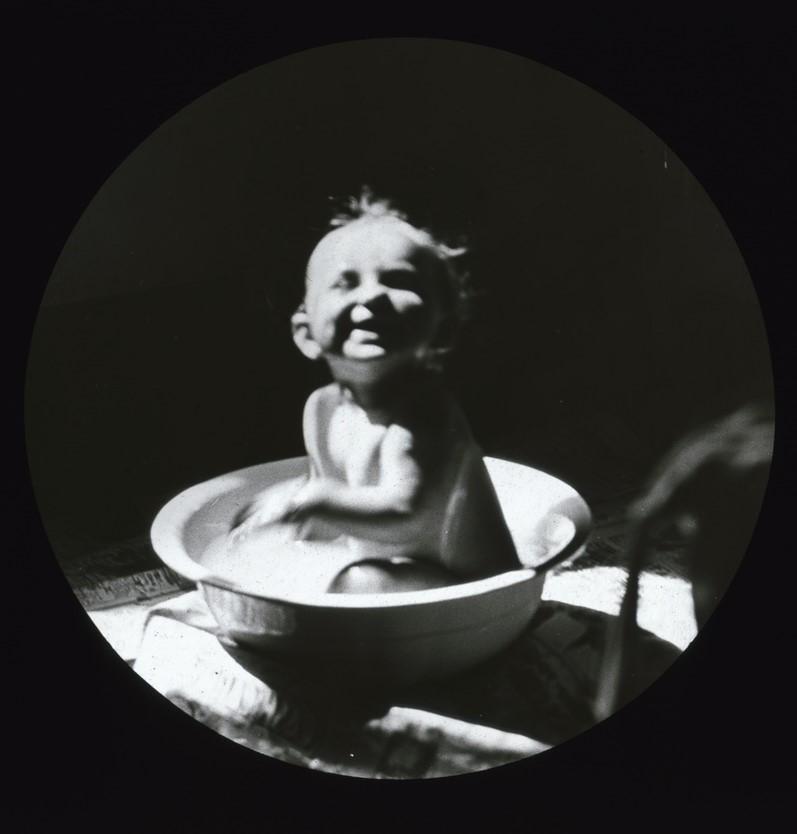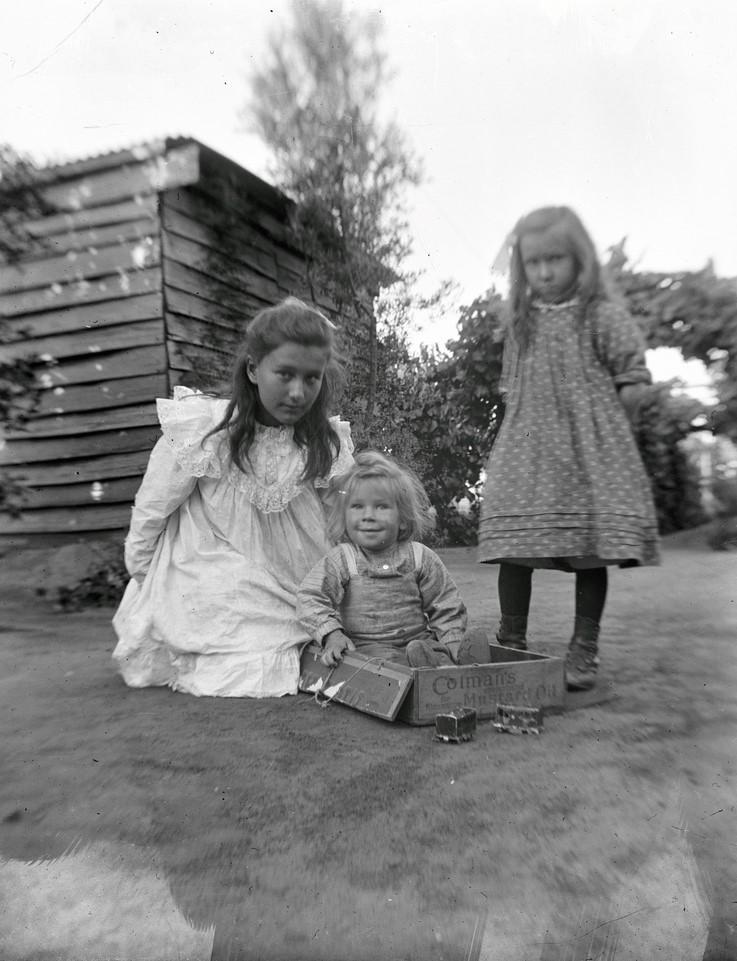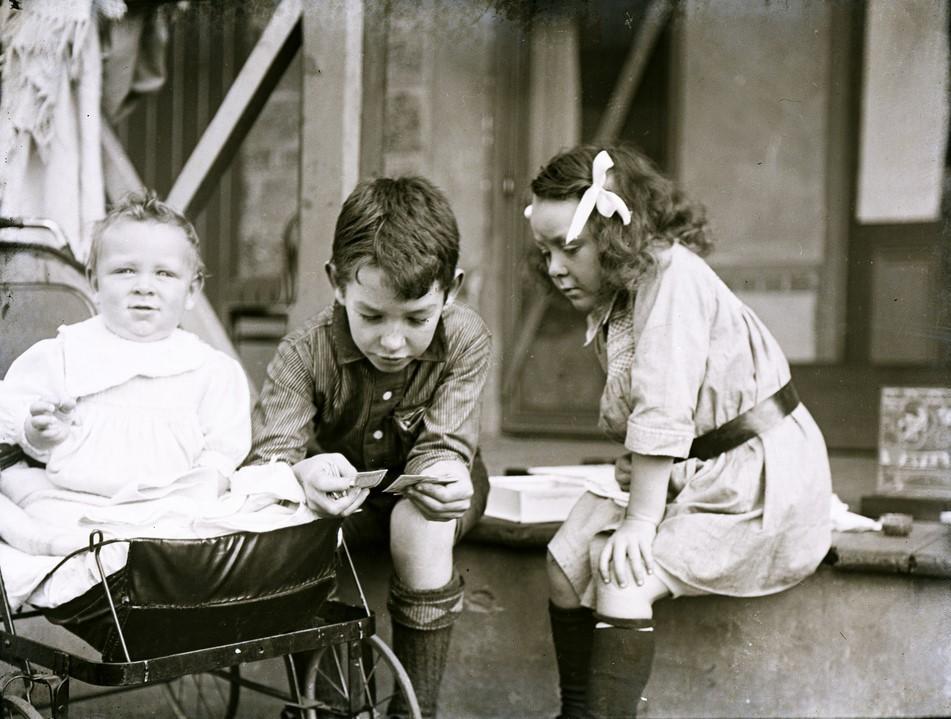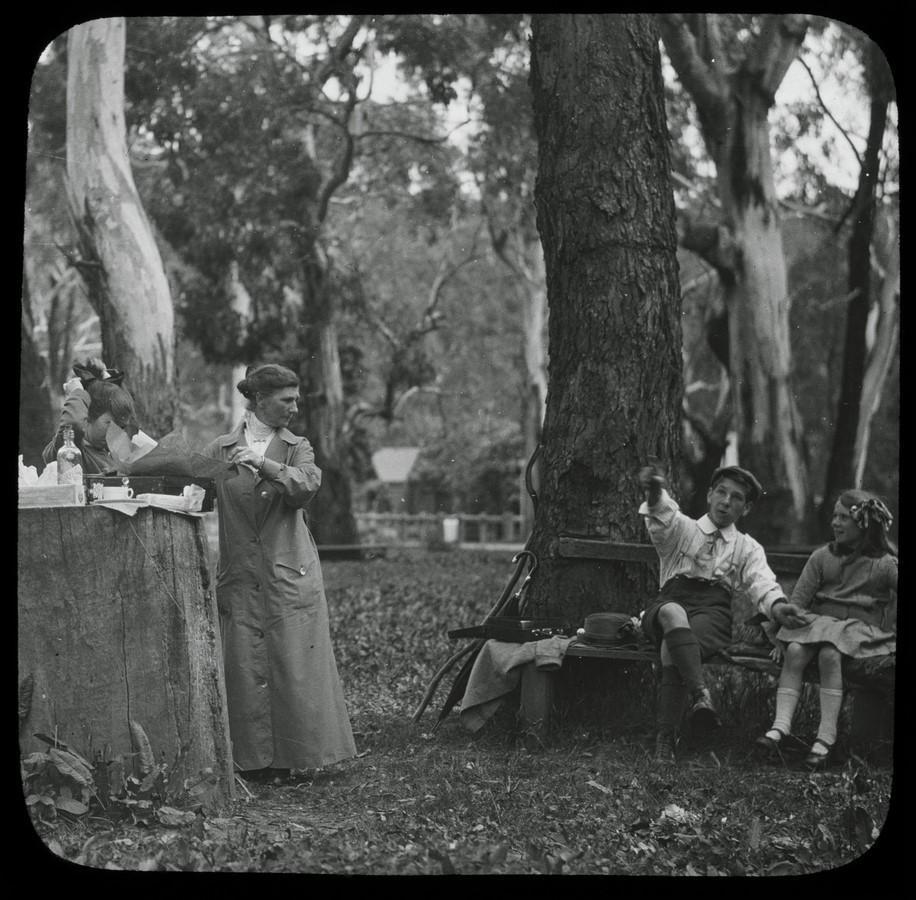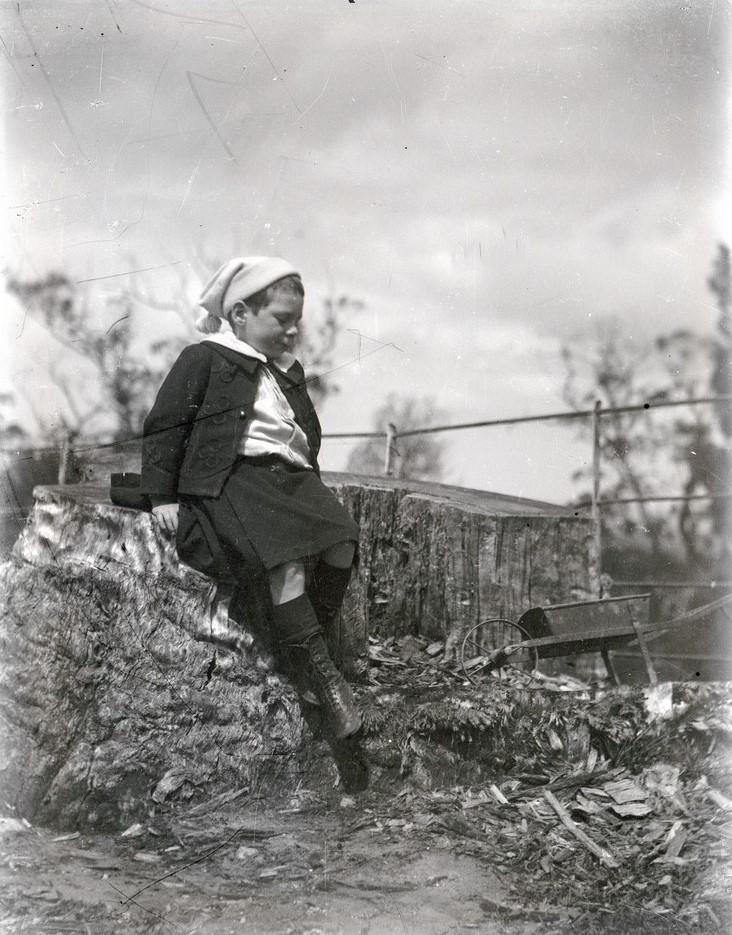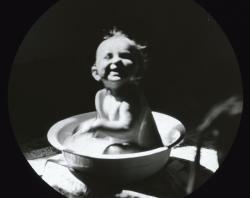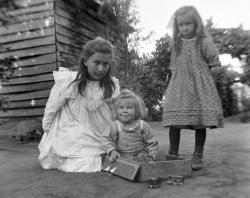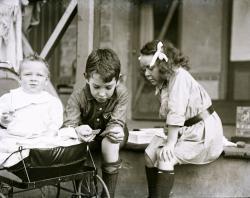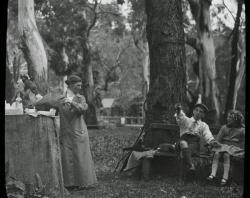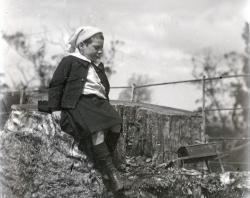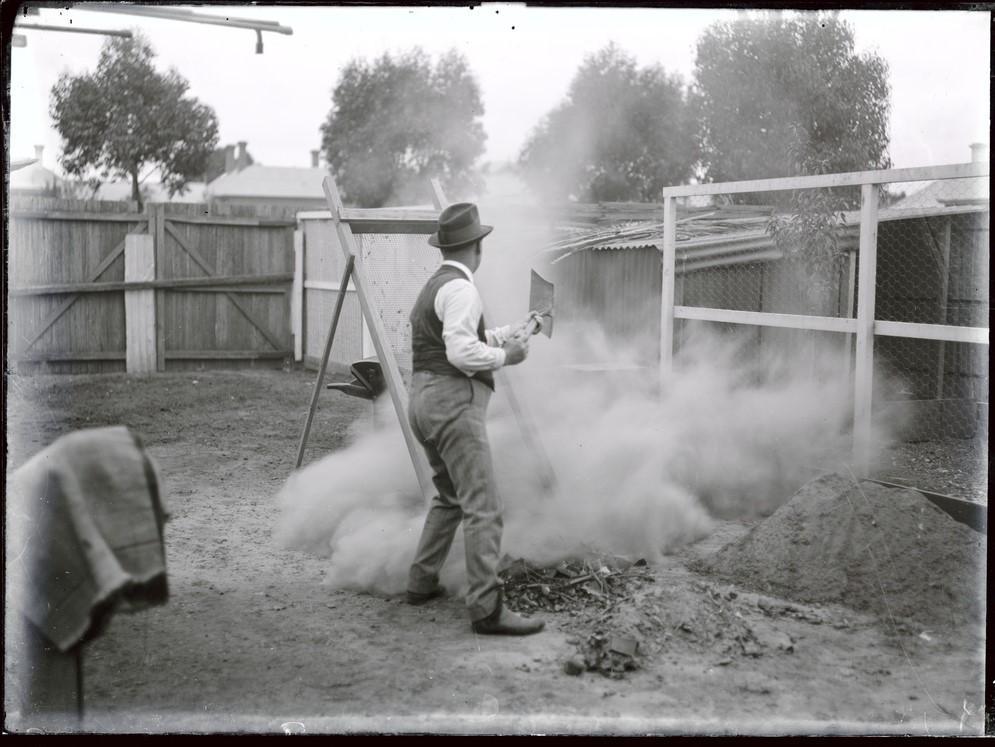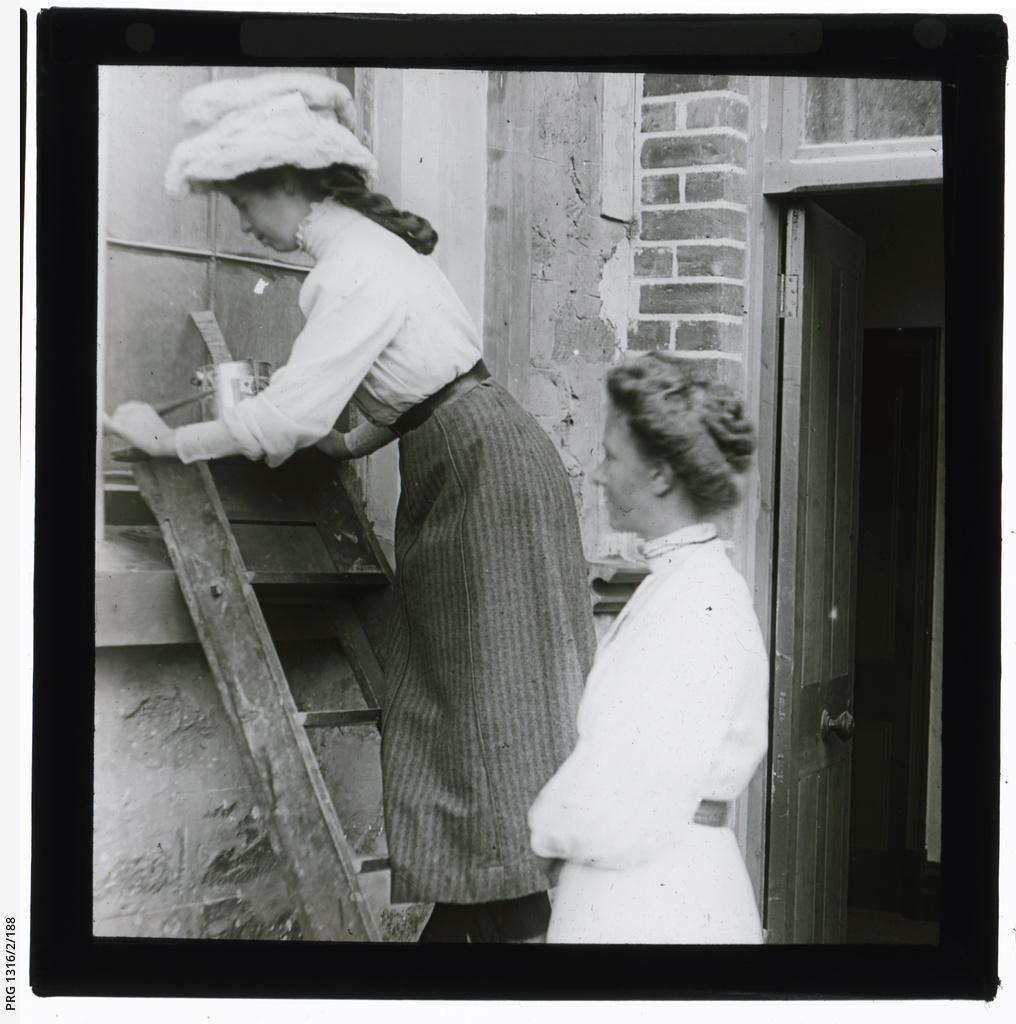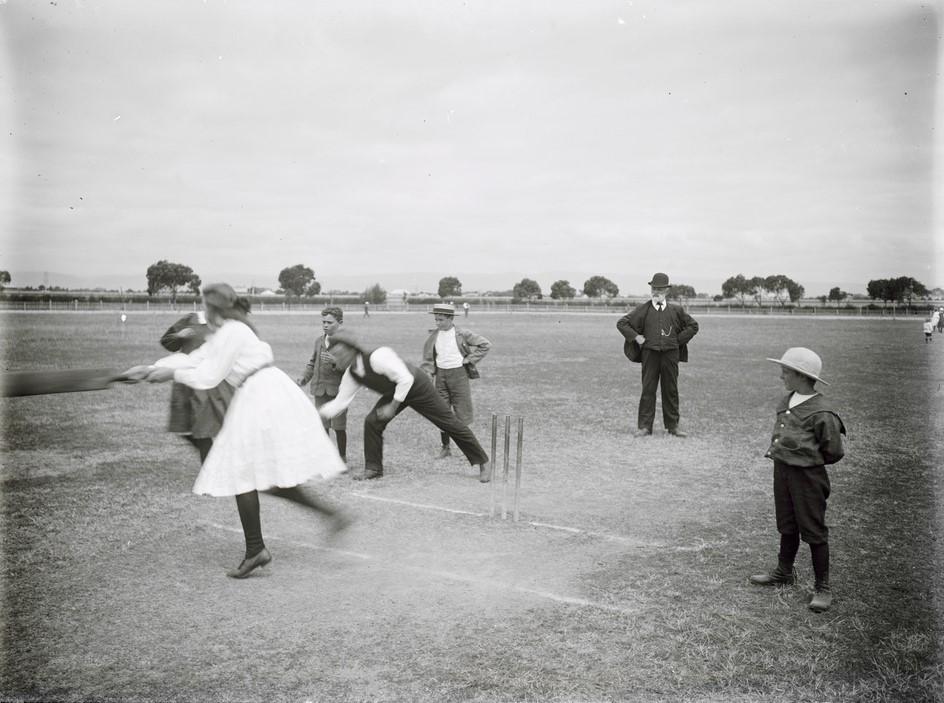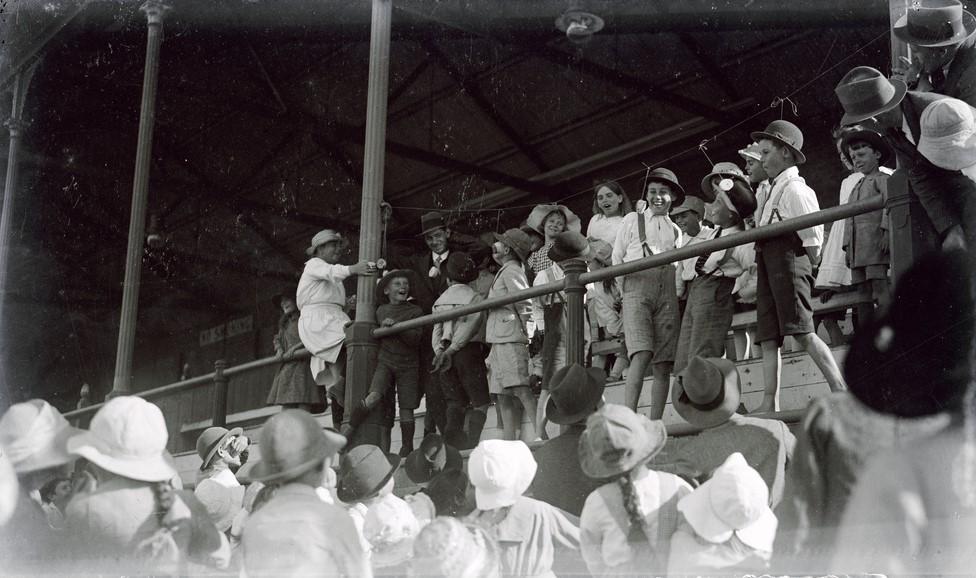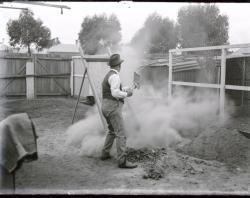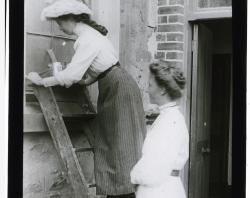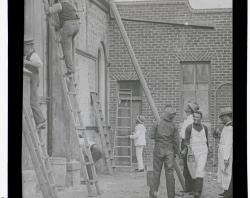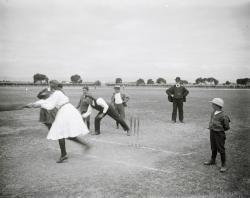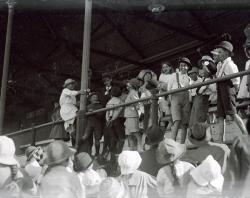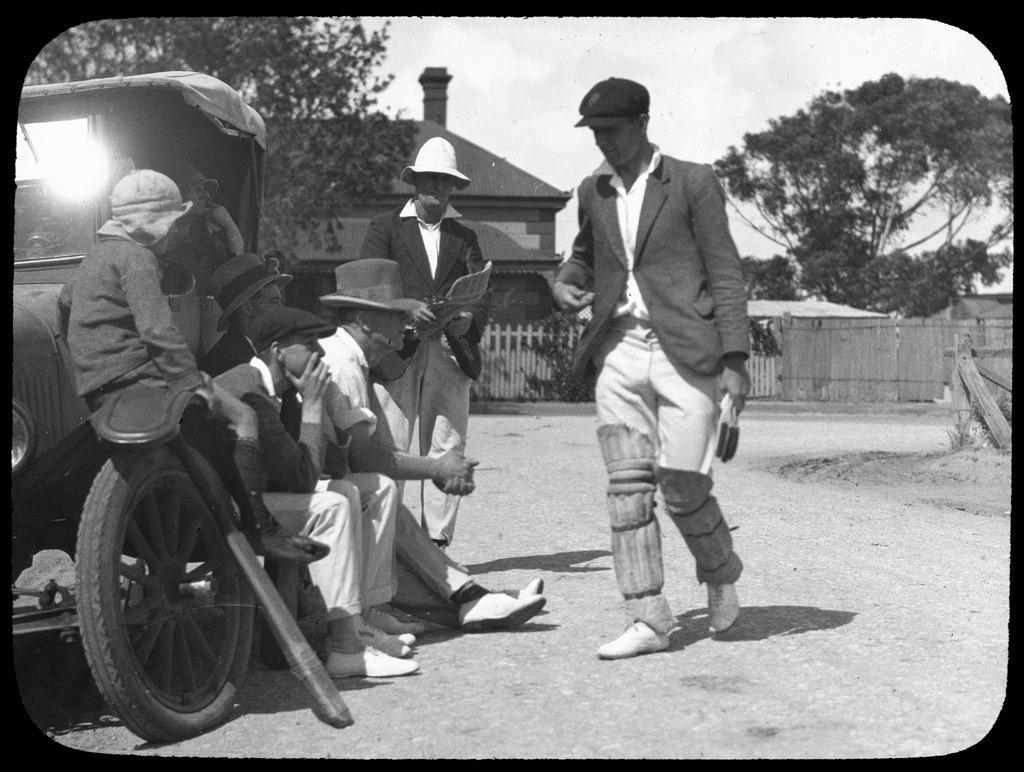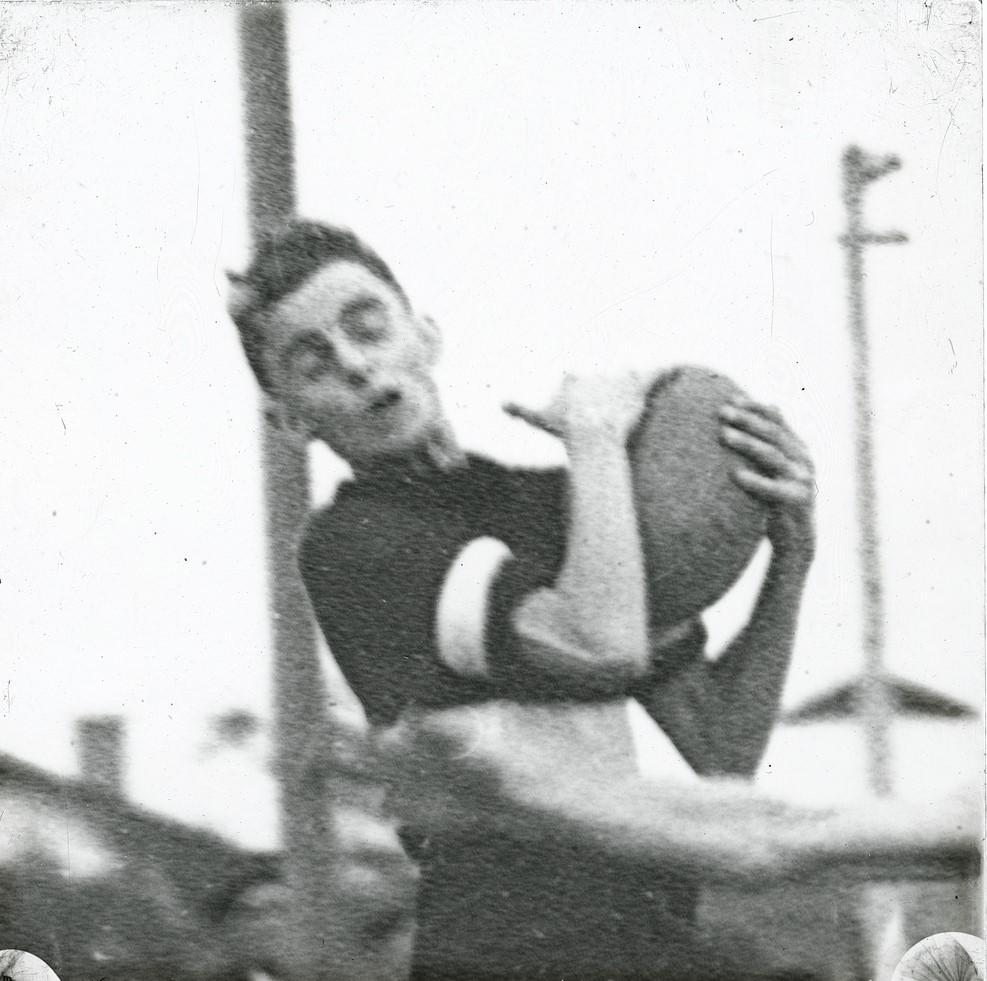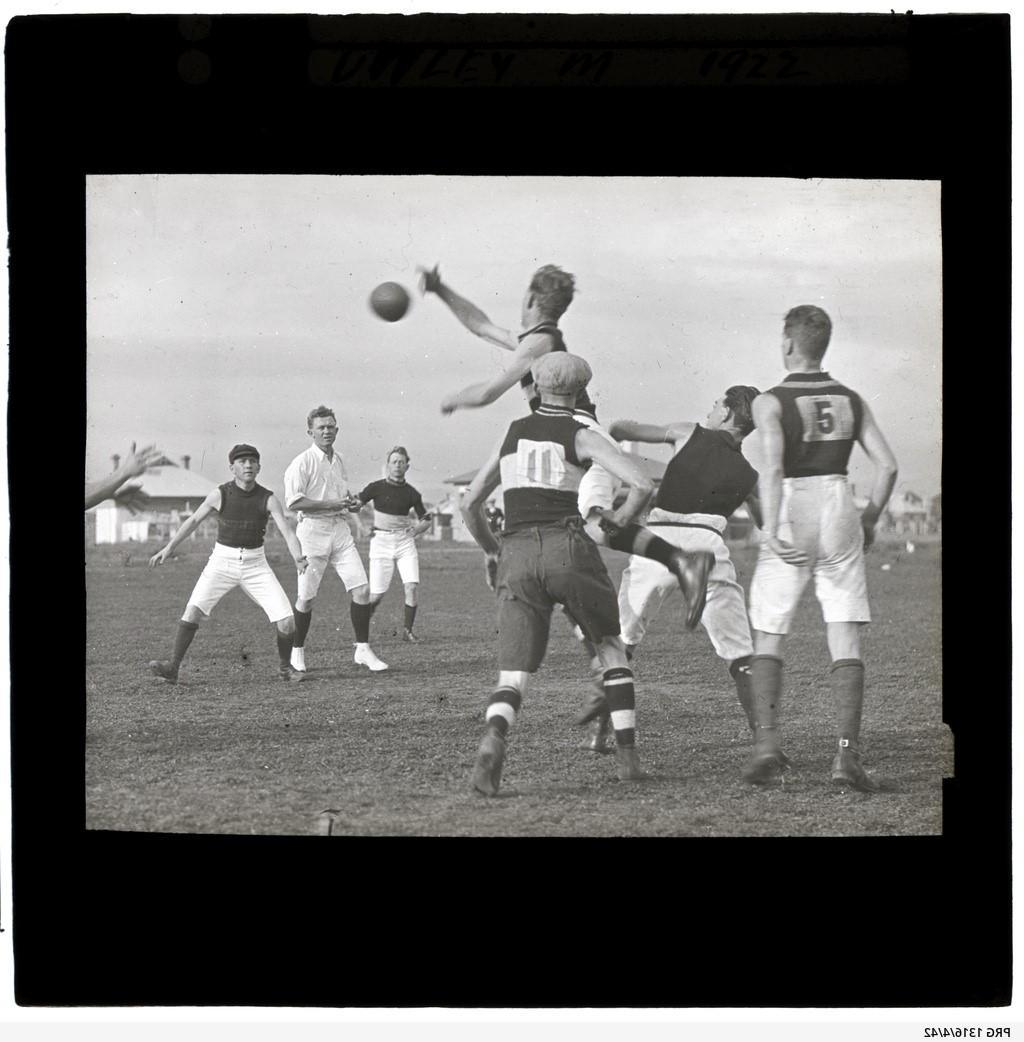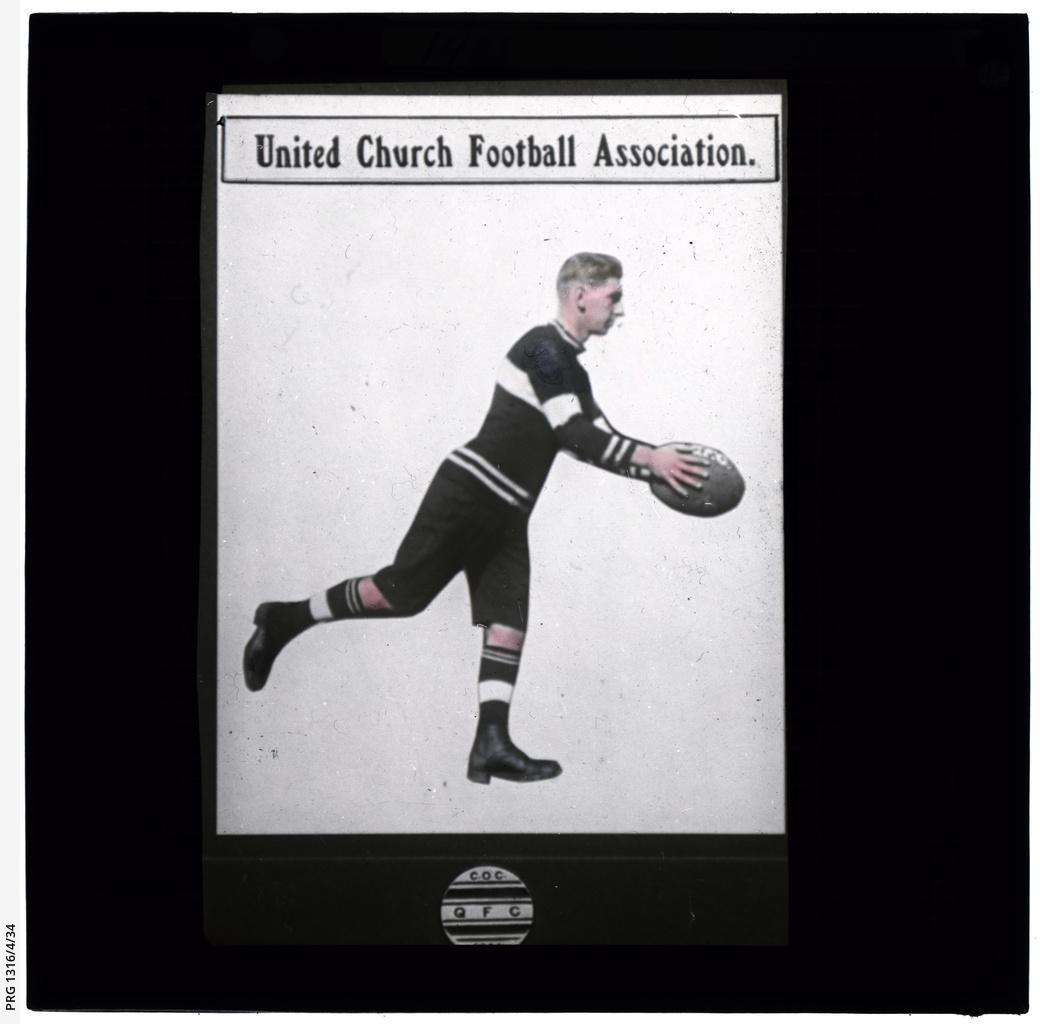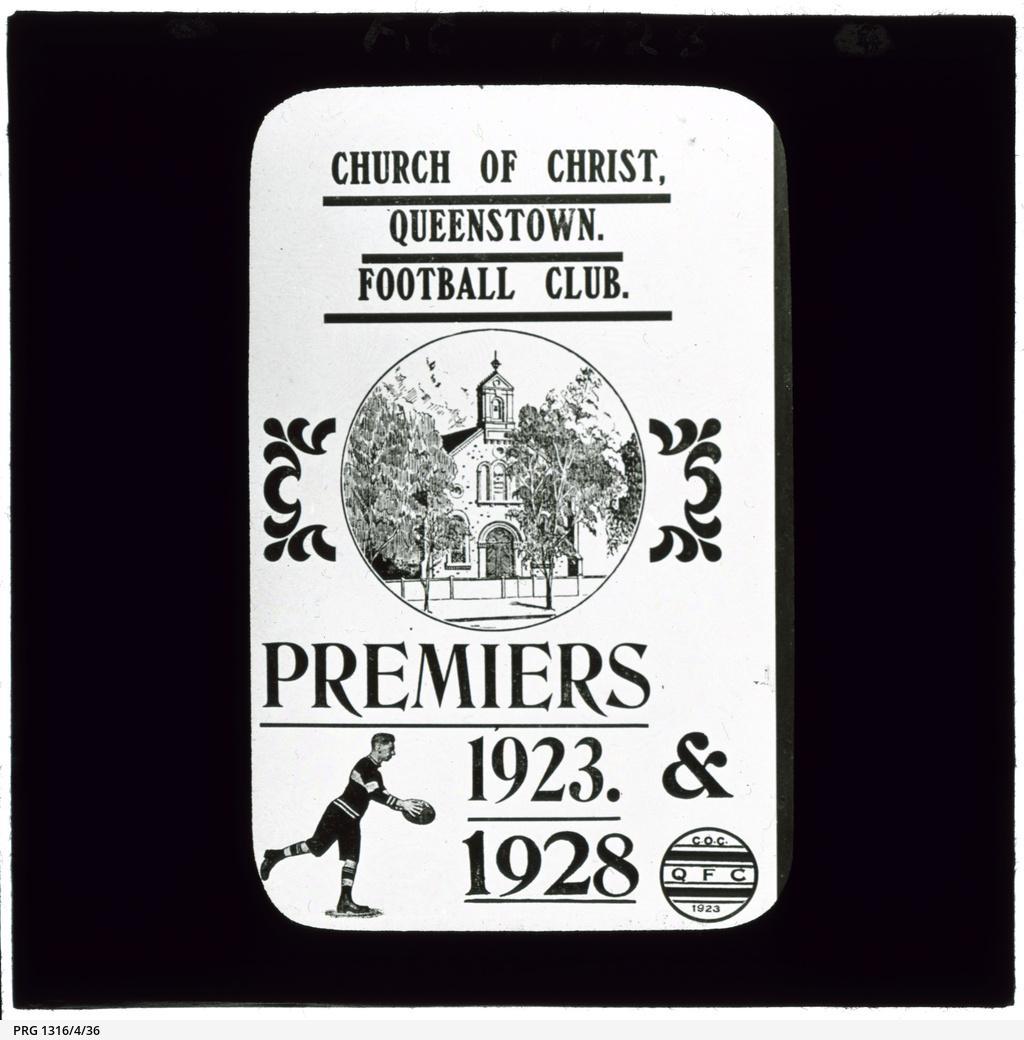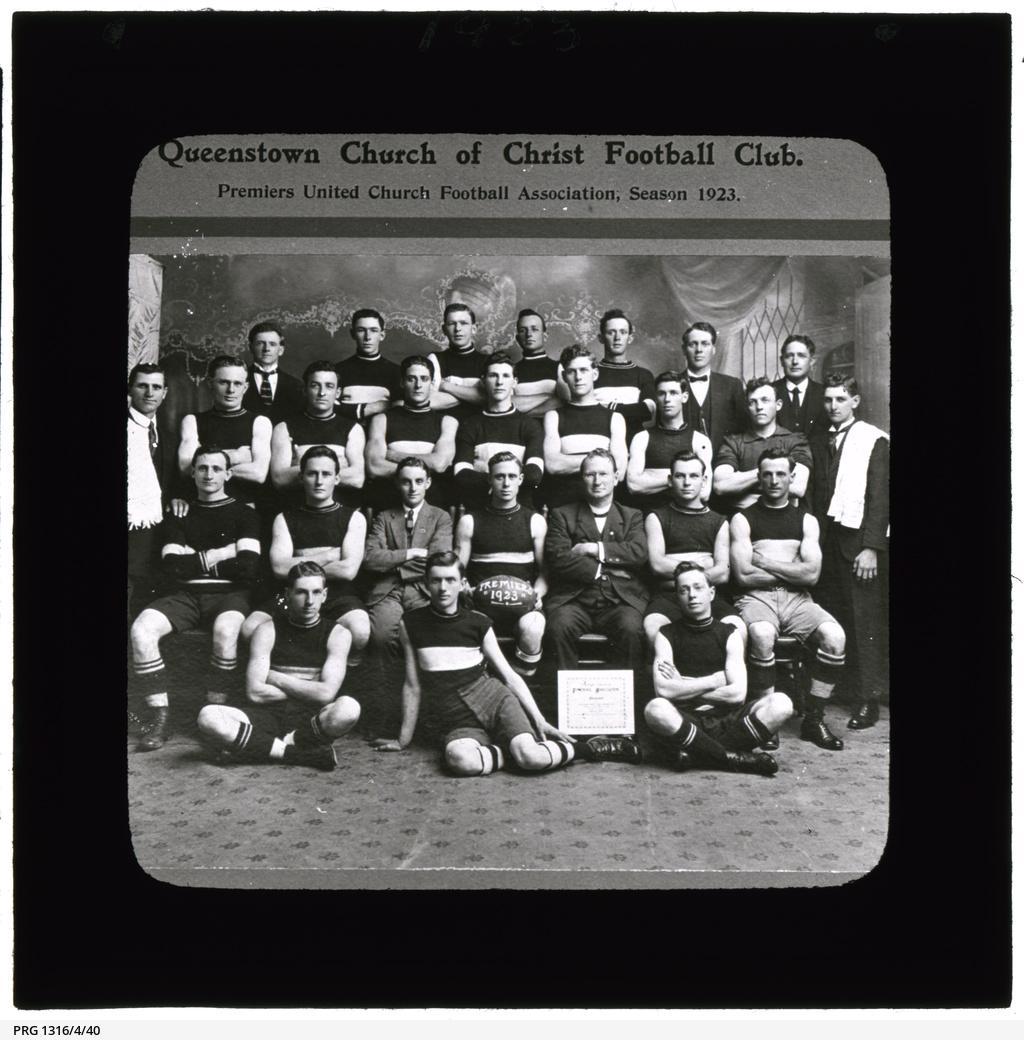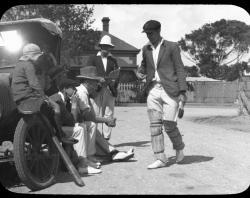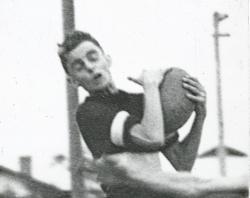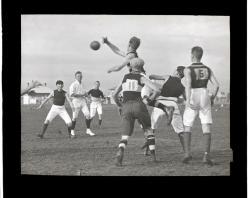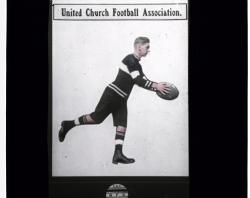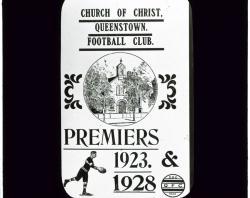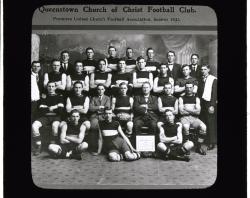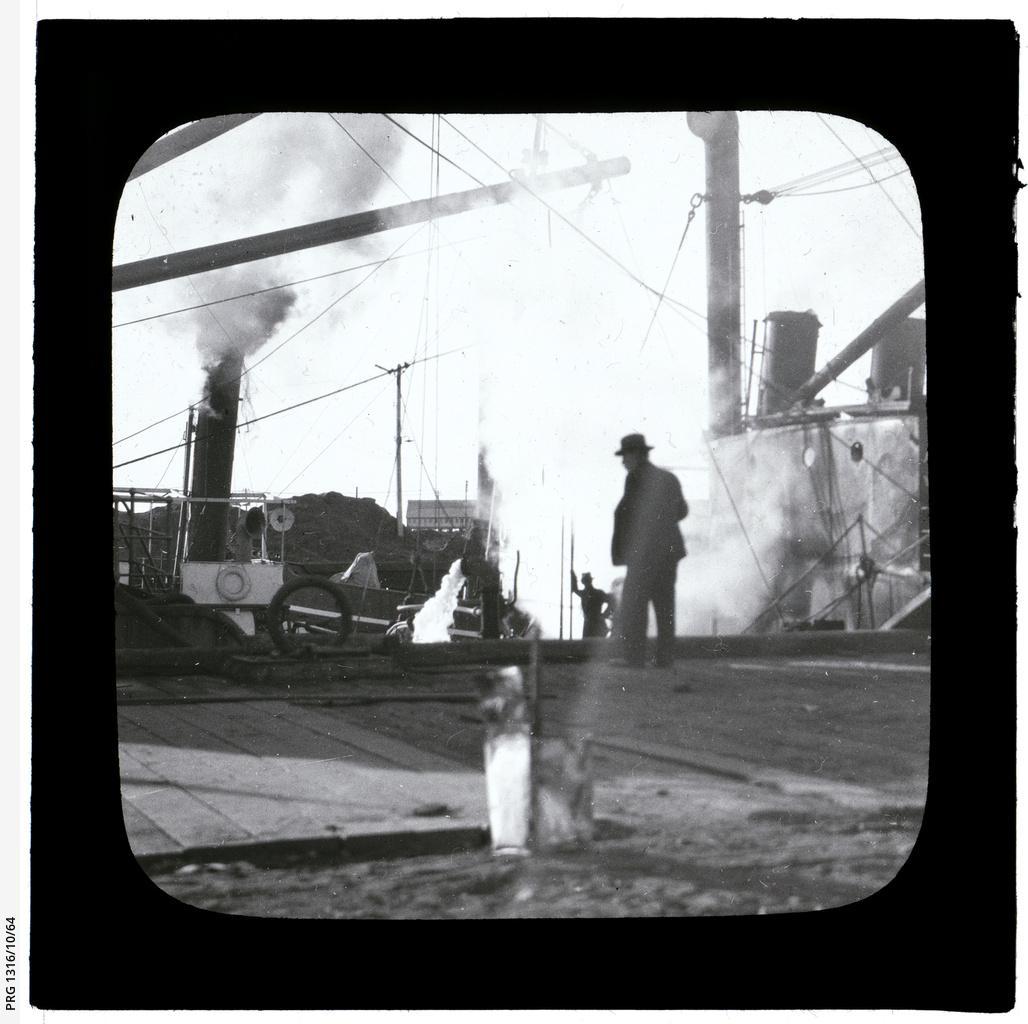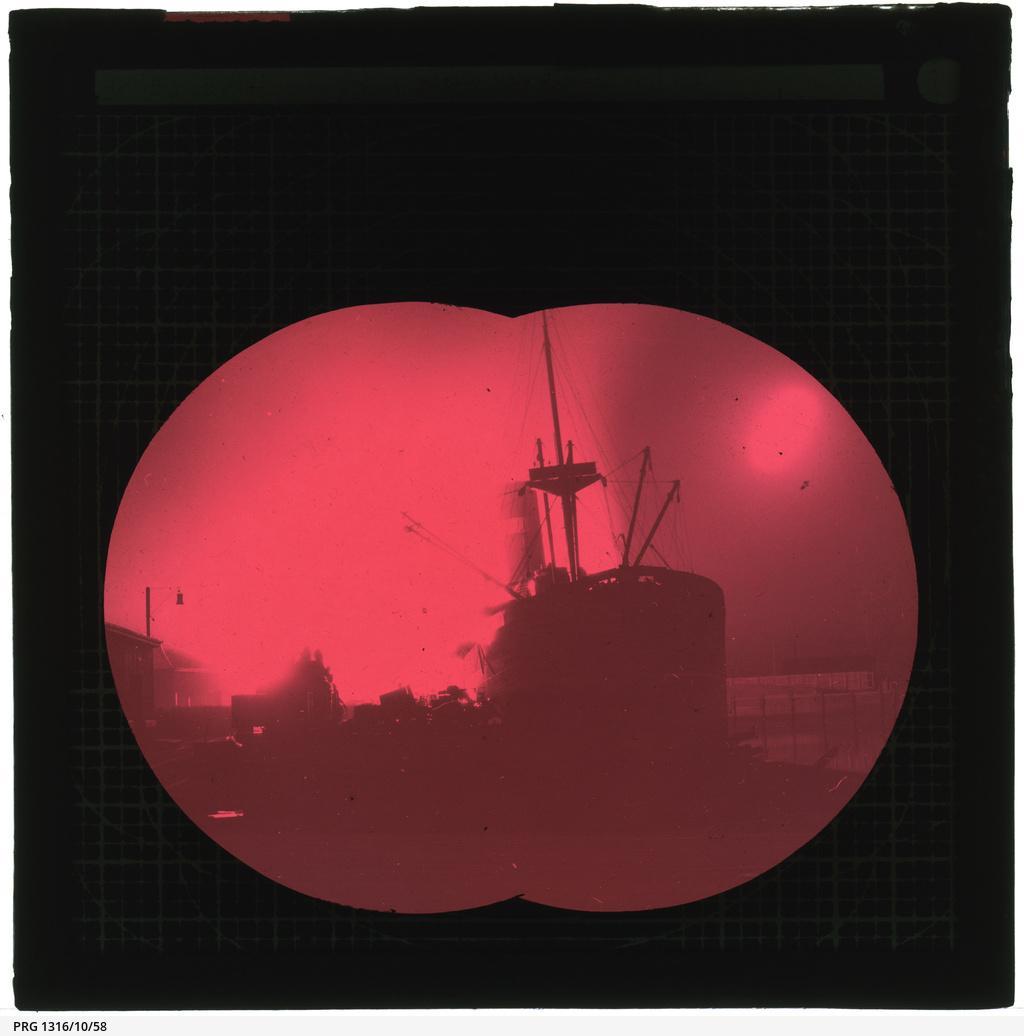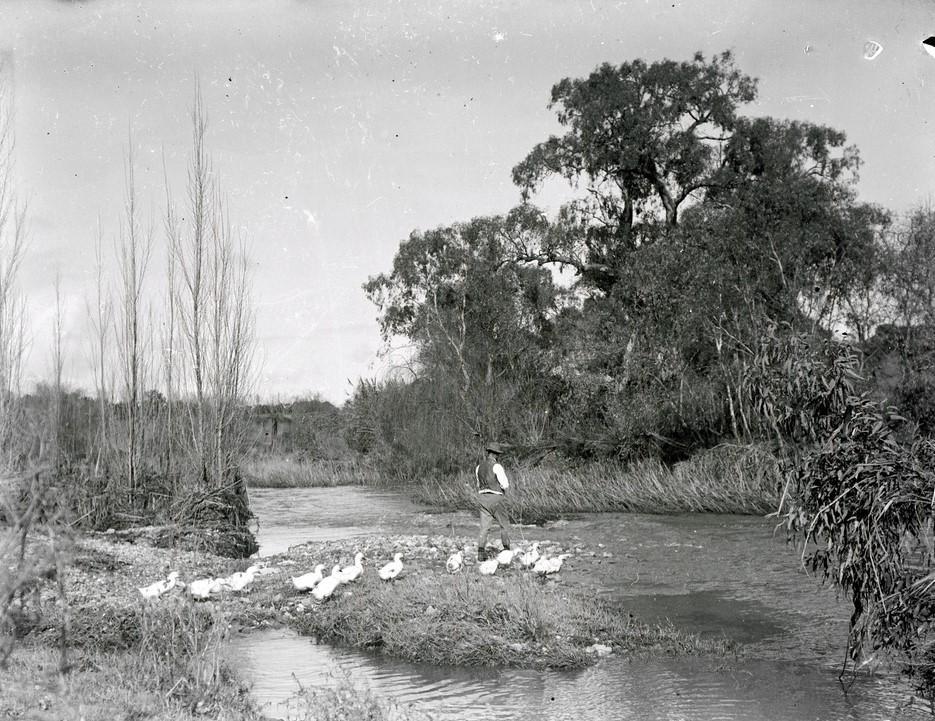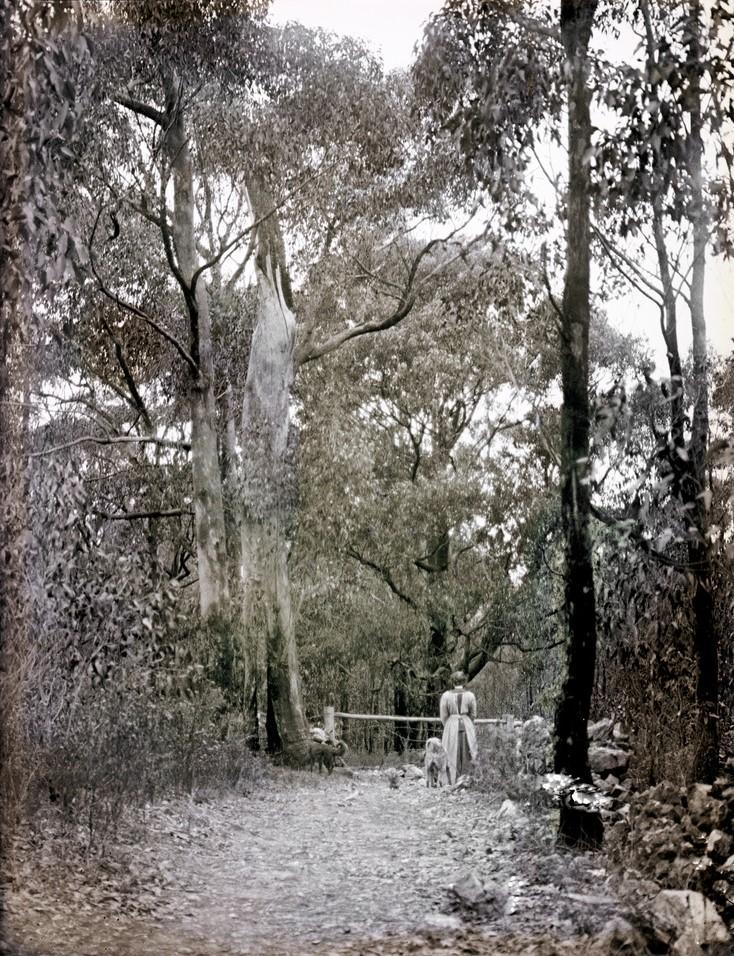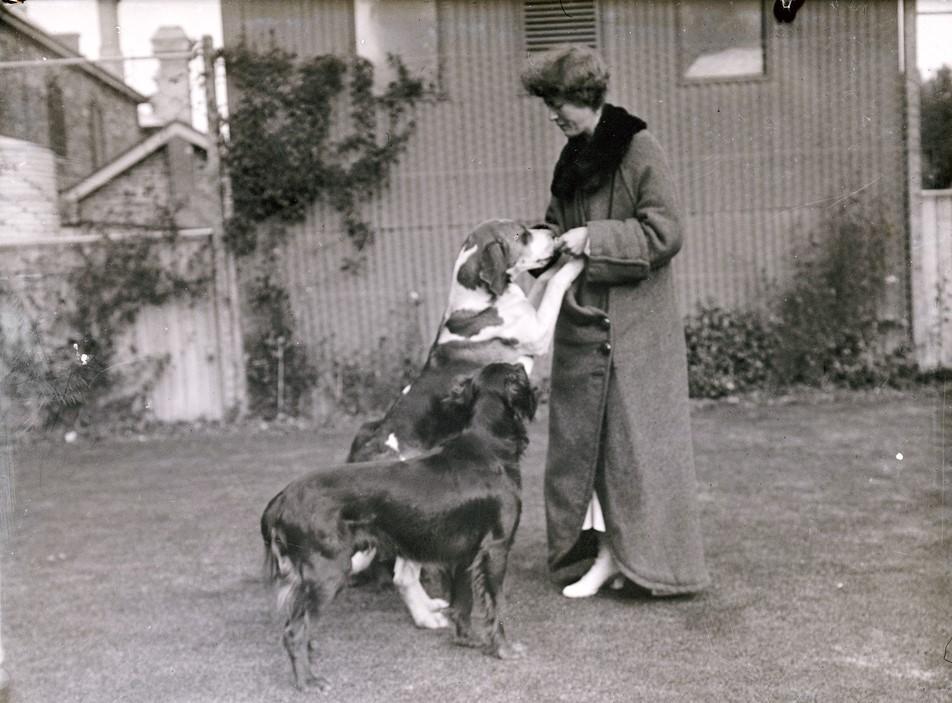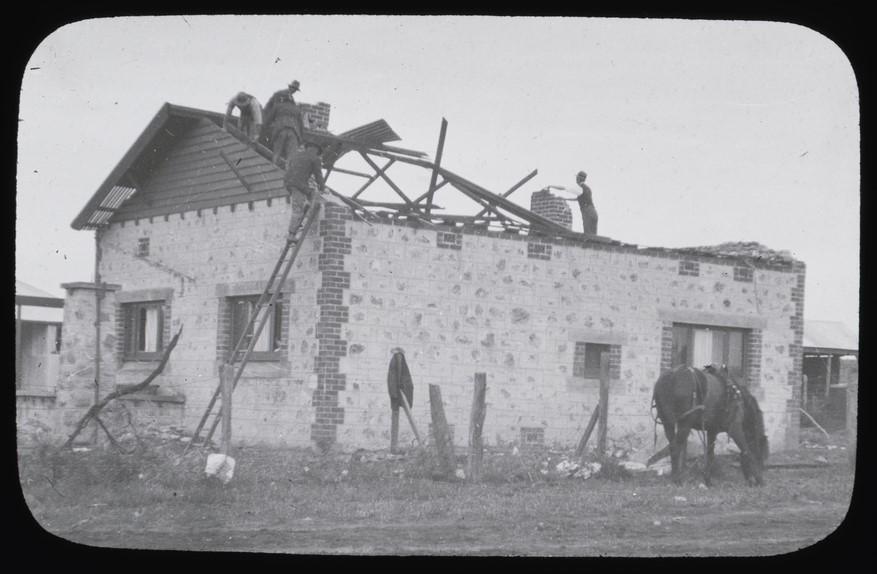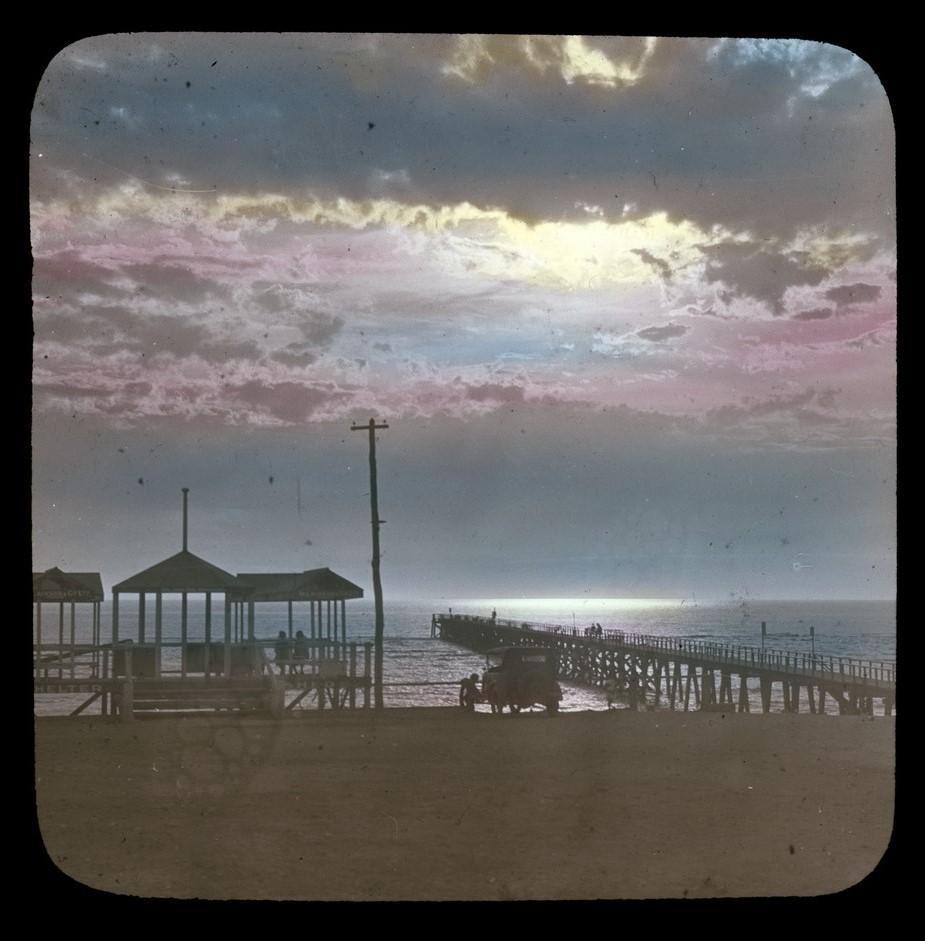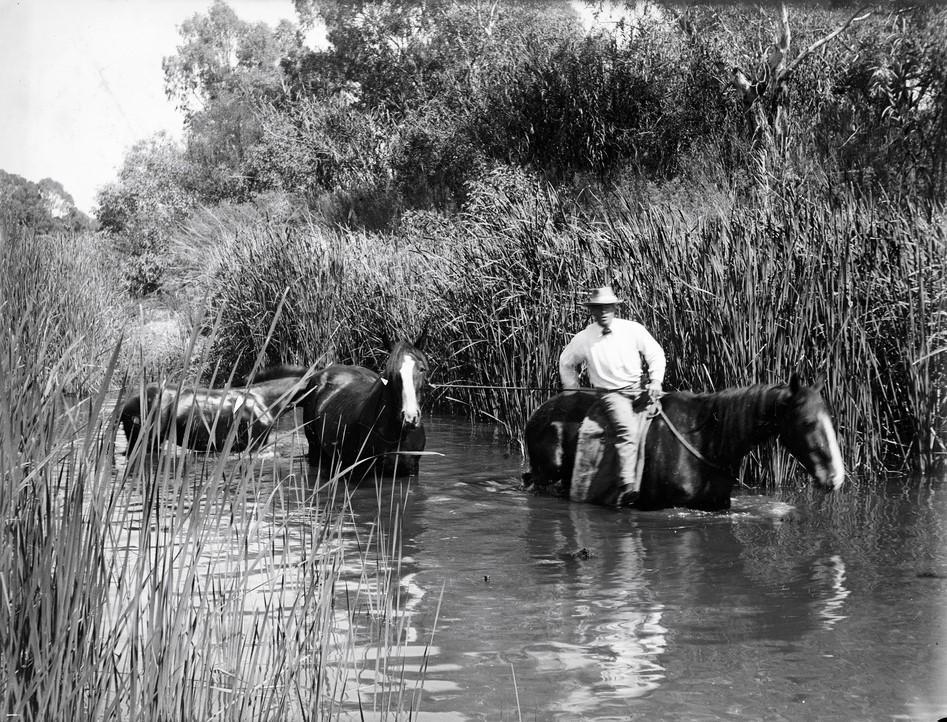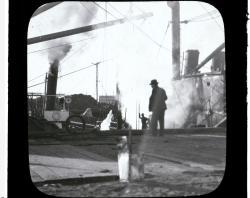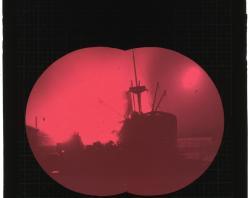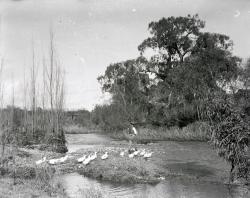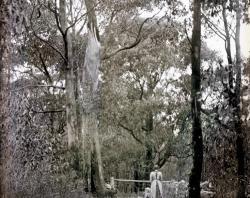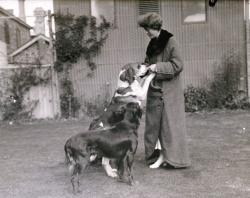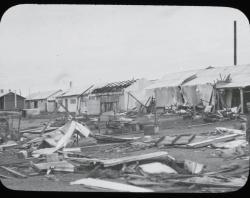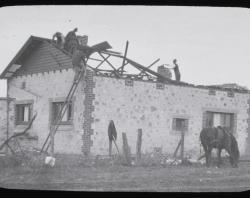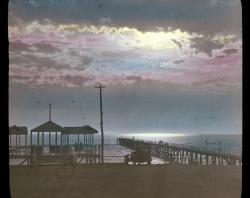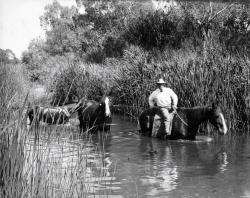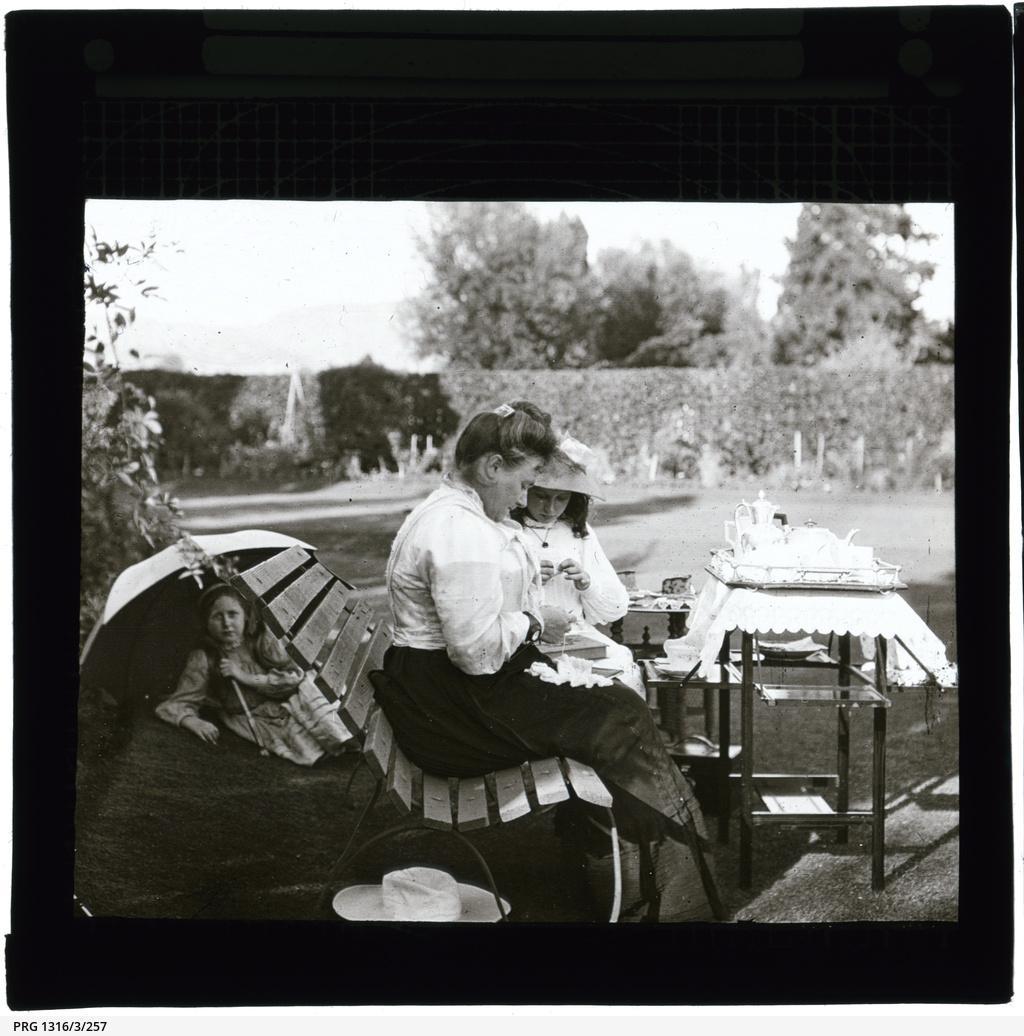
The Pictures of Pastor William Brooker
Capturing the importance of the everyday.
While running his successful cabinet making and furnishings business, William Brooker spent much of his spare time volunteering for the church and practising his photographic skills. The State Library holds one of his cameras and equipment, a Thornton-Pickard Crown. This model was only produced between 1905 and 1907 and used for taking stereoscopic views. A rectangular label on the back of the equipment shows this was used to take images related to his furniture business.
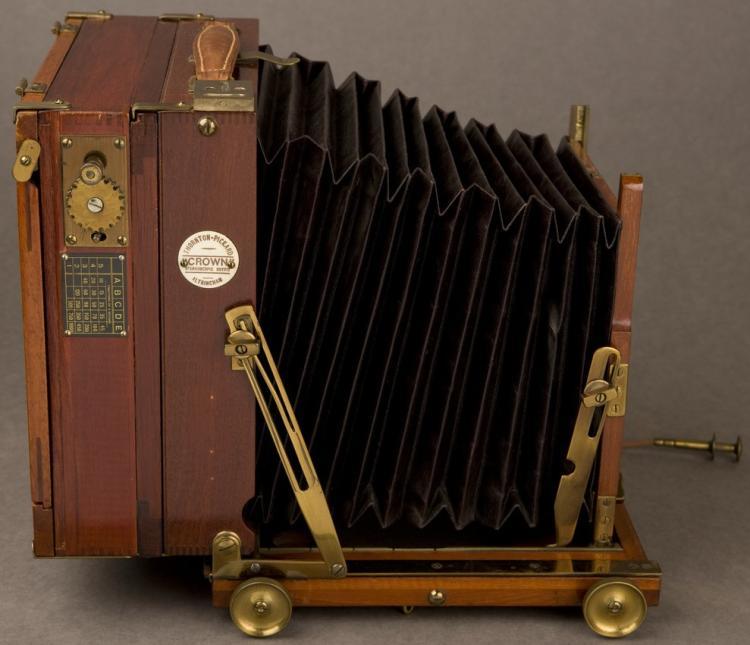

As a photographer he developed his own images and experimented with self-portraits, sometimes placing himself alongside other subjects within the frame. He also explored the dramatic use of indoor light, shade and contrast.
Brooker captured hundreds of images of ordinary people and their surroundings. Many show members of his family and local community members engaged in ordinary activities, including work, worship, meetings, travel, recreation and sport. He often photographed his family, particularly his wife and children and other close relatives and friends in familiar environments, at home, in the garden, or on holidays.
In 1909 his seven-year-old son, William, was critically injured in a tram accident. This proved to be a life-changing event. The driver had told the child to jump aboard while the tram was still moving. William fell under the wheels and his knee was crushed. The damage was life-threatening and the doctors warned the family to prepare for the worst. Brooker's response was to intensify his prayers for the child's life, and he was strongly supported by his church community who set up a prayer group. William Brooker offered a life-time of ministry to God if his son was saved. The child experienced a miraculous recovery. He not only learnt to walk again but lived well into his 90s.
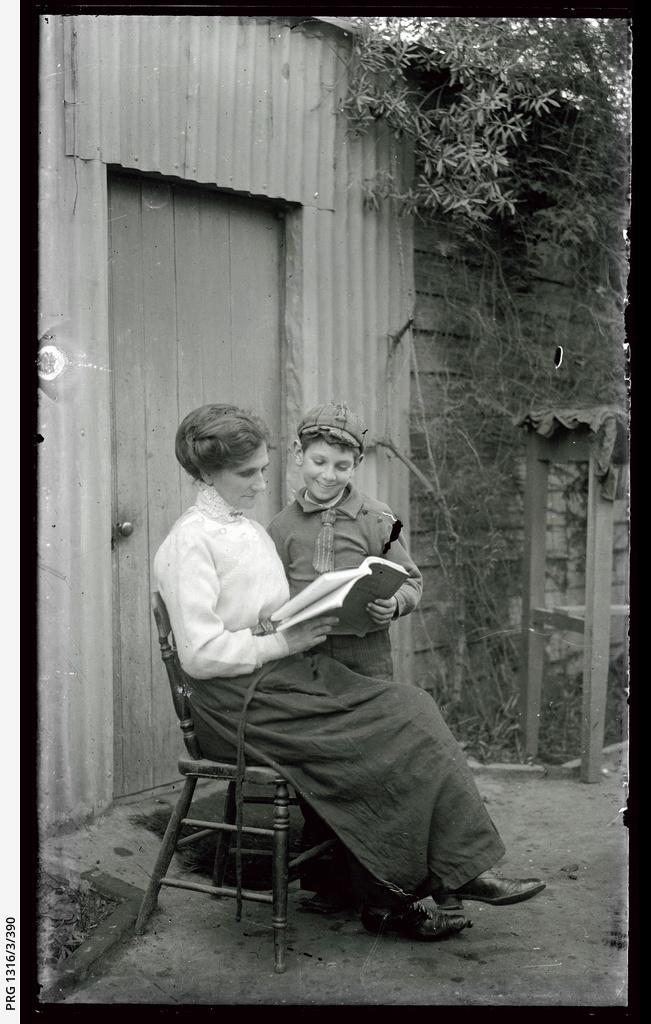
True to his word, William Brooker wound down his furniture business, increased his church work and then took up full-time duties with the Queenstown Church of Christ. In subsequent years he dramatically increased the number of church goers and expanded its ministry. Over several years his congregation rose from 20 attendees per service to an average of 175, with over 400 at some meetings.
Pastor Brooker was a skilled preacher. Over several decades, his people-centred approach continued to attract attendees from Port Adelaide and beyond. He involved his congregation in a variety of community activities such as working bees, picnics and other forms of recreation. Volunteers, including children, often worked on clean-ups, erecting new fences and building playgrounds.
William Brooker was also dedicated to the welfare of those beyond his local area. His reputation as a community leader continued to grow as he worked for the welfare of those in need, especially during the Great Depression. His ministry also grew as he conducted numerous regional and suburban tent missions. This included setting up a large marquee adjoining the Queenstown Church of Christ.
He was well known for presenting hundreds of lantern lectures on a variety of subjects. He travelled through South Australia, Victoria, Western Australia and Tasmania, taking many lantern slides himself and purchasing others.
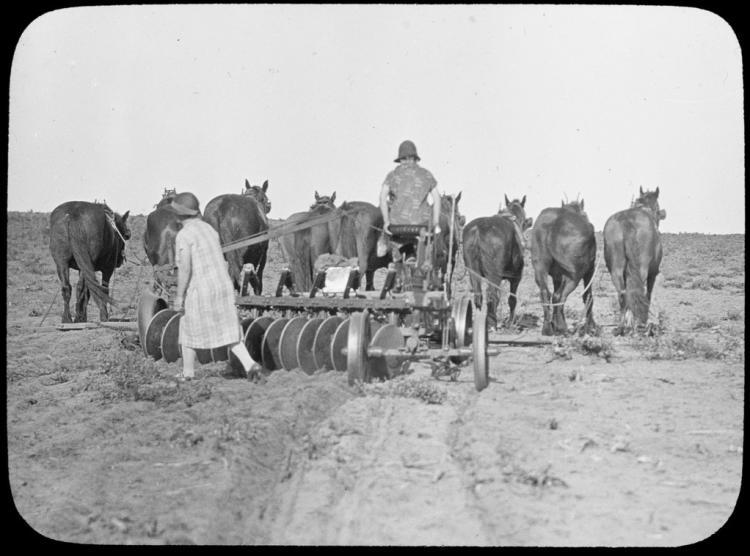
He was also passionate about sport. The Brooker Collection contains a wide range of images depicting tennis, football and cricket. These range from formal poses of teams to action shots and off-field activities.
During the Great War (WWI) Brooker was elected President of the Churches of Christ Preachers' Fraternal of South Australia. At that time he was also President of the South Australian Alliance, and a member of the Church Executive. He also served as the Chairman of the Committee of the Nile Street Seamen's Mission. He stated in a newspaper interview for the Port Adelaide News, Friday 29 September 1916 (page 1) that the general public were barely aware of the good the mission was doing amongst sailors visiting Port Adelaide.
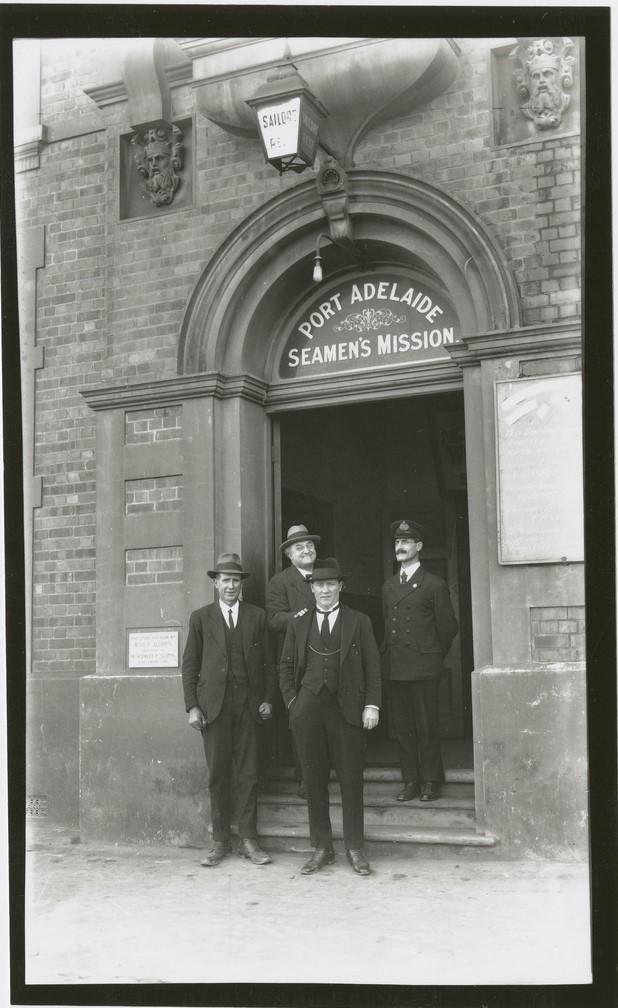
It was known that William Brooker had been asked on a number of occasions to leave his community to work for other Church and evangelical bodies interstate. He also worked closely as an organiser and publicist with visiting American evangelists on their South Australian tours. These included Dr Charles R Scoville, Dr Jesse Kellems and Charles Richards.
According to the Port Adelaide News interview, in 1912 he had refused a lucrative offer made by Charles Scoville.
"During the mission of Dr. Scoville in South Australia Mr. Brooker assisted him ... and also very successfully conducted the advertising campaign. So successful were his efforts, and so impressed was Dr. Scoville with the ability be displayed that he used every effort to secure Mr. Brooker's services permanently, saying that he had long been on the look-out for a man if (sic) his ability. He made a most enticing offer to Mr. Brooker to tour the world with him, and he bore down all attempt at self-depreciation.
Then, after careful consideration of the offer, Mr. Brooker came to the conclusion that if a man of Dr. Scoville's discrimination was of the opinion he was specially adapted to the work, he would be equally fitted to devote the whole of his time to the work at Queenstown, and the Church, hearing of the offer which had been made to him, finaly (sic) offered him the pastorate of the Church to which he had devoted so much time and energy." ~ (Port Adelaide News, Friday 29 September 1916, page 1)
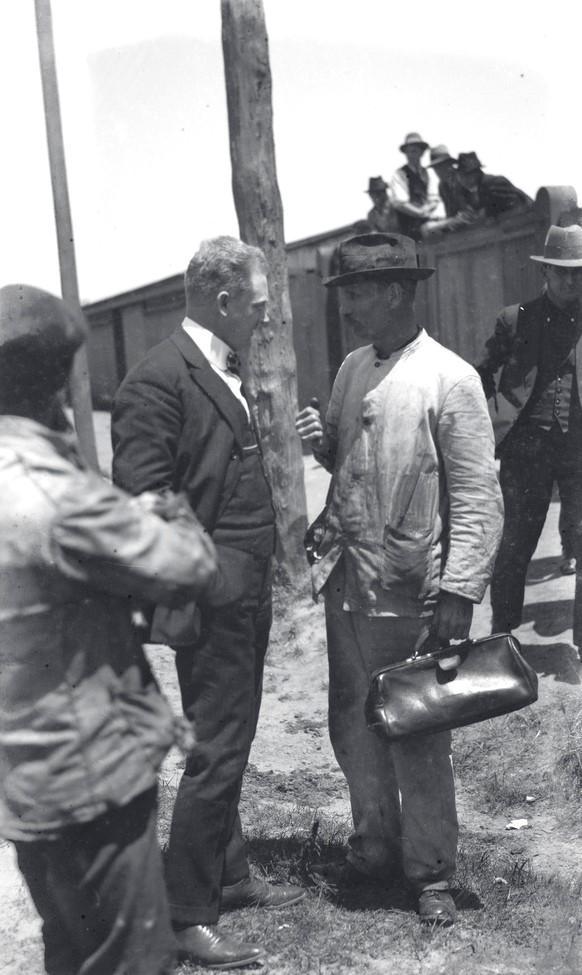
In the 1916 Port Adelaide News interview, the reporter asked Pastor Brooker if he had ever been tempted by offers from other organisations. He responded "I have had many tempting offers to go to other States, but have refused them all. I stayed on in Port Adelaide because of the great possibilities here for religious work, and because I love their spirit of loyalty."
During the waterside workers' strike and riots of October 1928, Brooker acted as a liaison officer between the strikers and employers. During the Great Depression which began in 1929, he worked tirelessly to acquire wood and basic supplies for those in need. Many of these were wharfies who were not re-employed after their strike action.
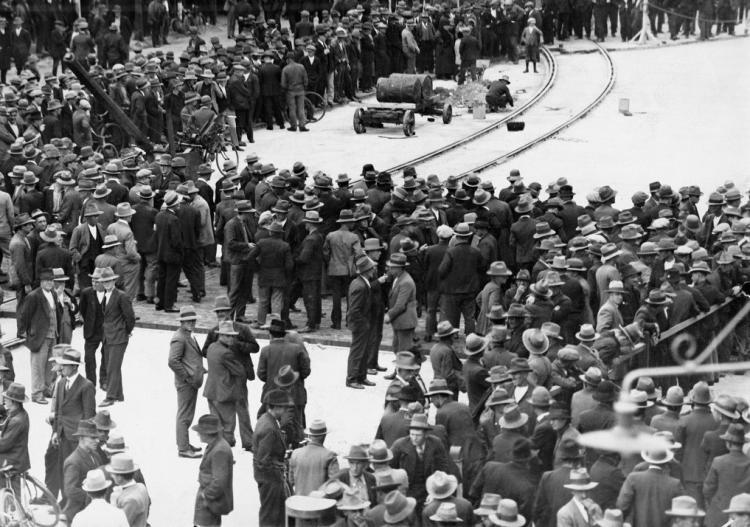
We know from archival material and newspaper records that Pastor Brooker took his ministry well beyond the pulpit and that his pastoral activities involved community in the broadest sense, whether working in his immediate area of Port Adelaide or much further afield. It is interesting that his outdoor photography, although capable, seem to take on an added depth, when a human figure is placed somewhere in the landscape.
His most memorable photographs capture moments of real absorption in the business of living, whether it's measuring a piece of wood, reading to a child, fixing a tyre on an outback road or shovelling dirt. Not all of his subjects are happy, not all are filled with joy and laughter, although many of them are. His religious beliefs seem to have gone hand-in-hand with an unfailing belief in everyday people and hope for the future.
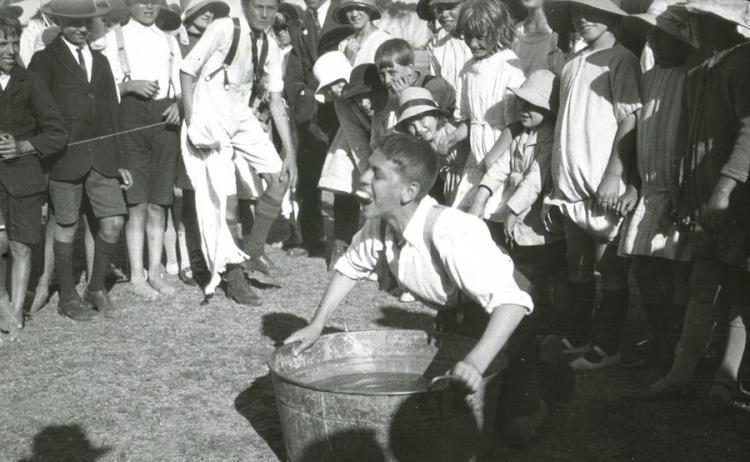
William Brooker passed away on 24 March 1947. His collection is a wonderful record of the everyday, particularly in the first thirty- five years of the twentieth century. After the horrors and losses of World War One, supposedly 'the war to end all wars', came the Spanish flu epidemic which took so many more lives.
A few years later came the Great Depression, and then World War Two. These cataclysms caused many to lose their faith in humanity but William Charles Brooker's energy and faith seem to have grown rather than diminished. Perhaps his greatest strength as a photographer lies in his portrayal of the ordinary.
Although he and his family and close friends appear to have lived a comfortable middle-class lifestyle, his images of people, city and suburban buildings and rural landscapes, cover a wider spectrum, in good times and bad. The Brooker collection provides a vivid record of everyday life in the early twentieth century and the people who lived it.
Written by Isabel Story, Engagement Librarian
